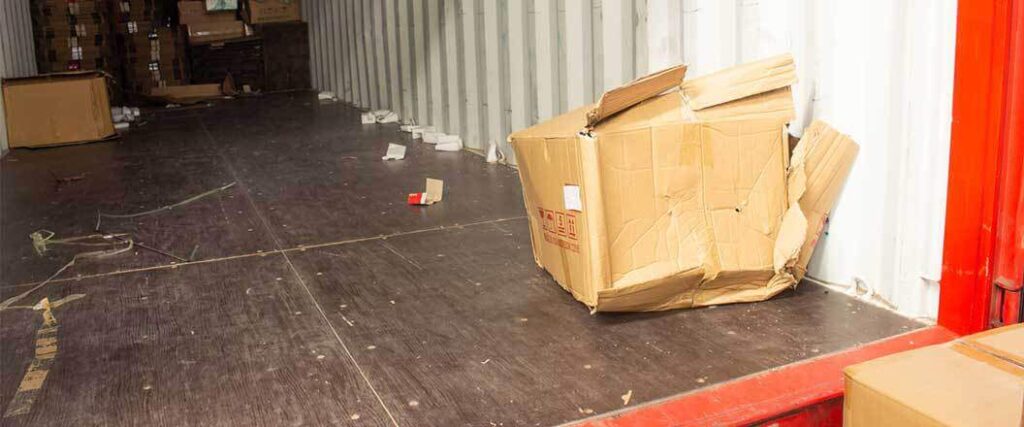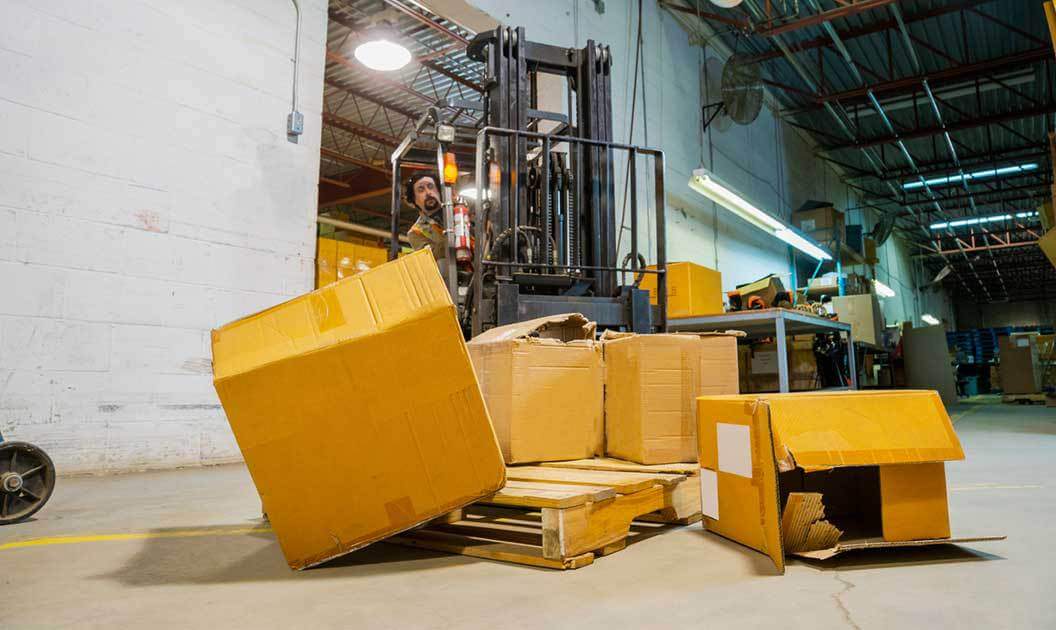Pallet rework is essential in the case of unforeseen troubles like damages, shifting pallets, or freight rejection at the point of delivery. A fast turnaround time is needed to keep the supply chain moving; that is where freight rework comes into play.
Pallet rework is required whenever a carrier or customer rejects palletized freight. This rejection comes from shifting, tilted, collapsed, poorly shrink-wrapped, or improperly stacked freight. The ISPM-15 mandate ensures that pallets are free from potential hazards that can come from the pallet itself.
Why are pallet reworks essential, and what results from poorly loaded pallets? The article below answers those questions and more.

Pallet Rework: Why is it Needed?
A pallet rework is required whenever your palletized freight is either rejected due to an issue with the palletized goods or has been damaged during transport. These issues are also not exclusive to truckload shipping and can happen anytime pallet shipping occurs.
Truckload shipping has fewer hands-on goods and less transference than other shipping methods. Rail, ocean, and air freight have more transference between multiple shipping modes, meaning there is a higher risk of damage.
Often, the reason for a pallet rework comes down to the following circumstances:
- Broken or partially broken pallets
- Freight exceeds the pallet's weight limits
- Bad shrink wrap job
- Pallet overhang
- Pallet underhang
- Pallet exceeds a safe height
- Visible damages
- Shifted loads
The additional cost of fuel and other carrier resources can put a real strain on the shipment with added costs to the shipper. That is why getting it right the first time is crucial. However, if a rework is required, it is a solid plan to partner with a trusted service.
A pallet rework will be required if any of the above situations occurs on or before a shipment goes out and also if the shipment is rejected. Fortunately, Transload Services USA is here to help get your pallets reworked and back on the road.


Freight Disposition
Whenever a shipment is delivered and rejected, or if there are any issues with the palletized goods along the way, a pallet rework is required. However, the disposition, aka the specific instructions on the shipper's part, provides the carrier with instructions on what to do.
This disposition can save a shipper every time from additional costs related to the shipment concerning fuel, short-term storage requirements, and the rerouting of trucks to pick up and store the rejections until replacements can be facilitated.
As the shipper, you will need contingency plans in place to deal with any event directly resulting from a rejected shipment. A partial rejection results from a few pallets suffering from the aforementioned issues.
These preset instructions will be instrumental in carrying out the will of the shipper when and if a rejection, damage, or defect to the pallets occurs. Handling a shipment gone wrong is up to the shipper's disposition or plan of attack.
The shipper will typically have the following plans in place should something go wrong during shipping.
- Reworking service
- Disposal service
- Donation service
- Consumer credit
The increased cost of having to reroute freight, rework freight or donate/trash freight all equal an unwanted added cost to the shipper. It is more cost-effective in the long run to partner with a 3rd party logistics service to get the freight reworked and redelivered ASAP.
There is a level of urgency when dealing with the “what to do now” scenario when things go wrong concerning a shipment. Fortunately, pallet rework can be performed quickly and save the shipment.
Pallet Overhang and Pallet Underhang
When putting a pallet together, it is critical to avoid both pallet overhang and pallet underhang. These two forms of palletization can create enormous problems when being handled and shipped.
Essentially, both overhang and underhang represent imbalance. Shifting, tilting, and collapse can and will occur through imbalance on a pallet. That is why it is essential to stack and wrap a pallet thoroughly and with great care.
Pallet Overhang:
- A pallet should be neatly stacked with freight not exceeding the pallet's four sides, creating an overhang of goods.
- An example of this can be seen when the cargo exceeds the exterior of the pallet and is prone to damage.
Pallet Underhang:
- Similarly, you want to keep an eye out regarding the underhang of cargo on a pallet which can also lead to imbalance issues regardless of shrink wrap.
- An example of this can be seen when the cargo does not fill the pallet base, leaving gaps where shifting can occur.
It is essential that when pallets are used, they must first meet the International Standards for Phytosanitary Measures Number 15 (ISPM-15). The reason for this measure is to ensure that all pallets are safe and free from infestation or potential hazards before loading freight.
Most customers who receive palletized shipments have policies concerning an acceptable shipment. This policy is in place because customers do not want to waste resources fixing a problem when they want pallets to go where they need to be and on time.

Rejected Freight
As it has been noted, rejected freight can and will happen if you are not mindful of issues that can arise. While preparing palletized freight for shipping, look out for the following potential problems with your pallets.
- High Stacking: Avoid stacking pallets high to avoid potential damage from tipping during transport.
- Bad Shrink Wrap: Pallets should be completely shrink-wrapped to help prevent cargo from shifting during transport.
- Weight Capacity: Avoid exceeding the recommended weight capacity on pallets to avoid a rejection from the customer.
- Dimensional Packing: Avoid building up a pallet with underhang or overhang, and consult the customer for the required pallet restrictions.
A direct refusal on the part of a customer to accept the delivered freight due to issues like these will cause you to facilitate a pallet rework. The result of a pallet rework can become costly not only fiscally but in terms of time.
It is essential to consult with your customers before preparing palletized cargo. The reasoning is to avoid any potential rejection or rework on your shipment. If a rejection occurs, then the shipper's disposition comes into play.
The disposition will have clearly defined instructions, including:
- Customer credit
- Return of goods to the shipper
- Speedy rework and redelivery
- Donation of freight
- Disposal of freight
Many things can go wrong with a pallet, from the point of attaining and loading the pallet to the point of delivery. Inspecting the pallet first, then consulting your customer on any pallet rules before loading them with goods, is recommended.
Freight Rejection Rates
Freight rejection occurs when the carrier is slated to haul your palletized loads to the customer, and they are forced to reject the freight. The reasons why the freight is turned away will vary, and the frequency of this unfortunate circumstance is the rate.
Freight Rejection Rate Data 2011 - 2016
| Average Rejection Rate | 19.8% |
| Truckload Load Cost Increase | 14.8% |
| Overall Expenditure Increase | 2.8% |
A lot can happen when working with a carrier to ship your freight to a customer. Besides issues stemming from lead times and poor booking, which both cause delays, a miscommunication in a truckload request for proposal (RFP) can also contribute to freight rejection.
However, palletized freight is one of the biggest culprits of freight rejection. The lack of care when arranging pallets, leaving them to either shift, tip, or get destroyed during the process, is quite common.
Avoid time delays, added costs, and unhappy customers if you require a pallet rework. Don’t become a statistic; seek out a trusted partner who you can rely on to turn rejected freight into accepted freight.

Rework Your Pallets at the Speed of Light
We live in a fast-paced society where the need for a stable and consistent supply chain is of the most significant importance. However, sometimes there are issues that can pop up and derail a supply chain shipment.
That is why it's mission-critical to have a pallet rework option ready at a moment's notice. Transload Services USA will have your back in a pinch anytime and anywhere.
We aim to ensure that whenever your freight is rejected because of an issue with the pallets in your delivery, we can correct them quickly. Additionally, we can offer services like:
We care about getting your freight back on the road and delivered. Your business is our focus. Contact us today for a free quote or give us a call (352) 282-4588 at to get started.

